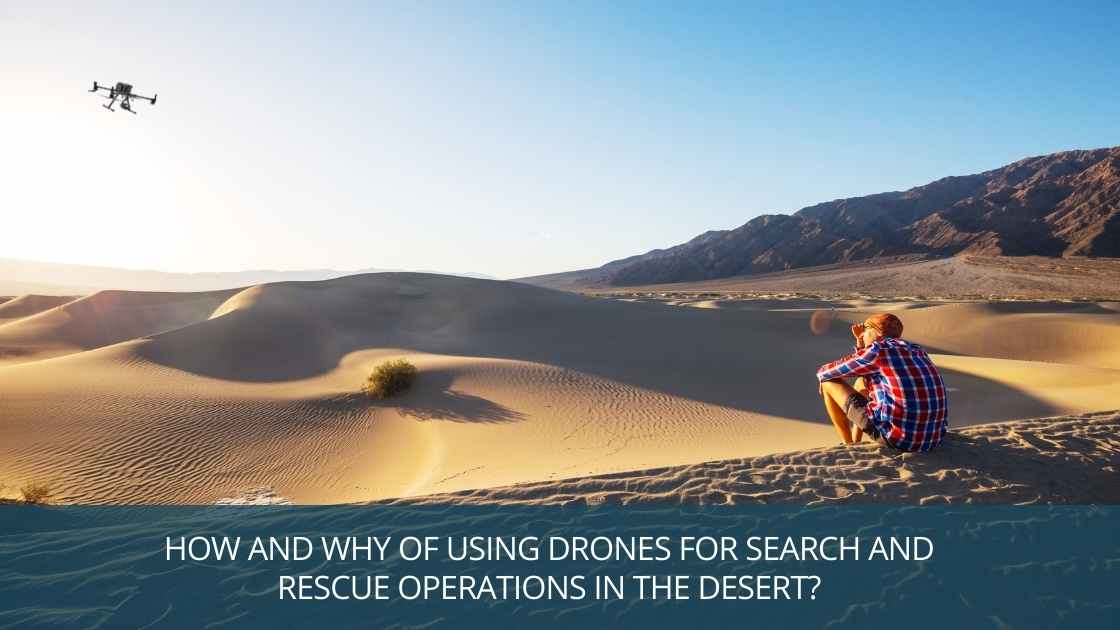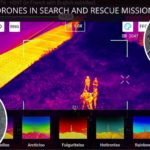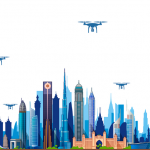
Search and Rescue Operations in the Desert: An Overview of Drones in Use
There are several ways in which drones can be used to enhance public safety and security. This use case attracts attention due to its straightforward benefits. We are discussing the use case of search and rescue.
In MENA countries, desert excursions are one of the most common pastimes. In the Persian Gulf region, including the UAE, Saudi Arabia, Kuwait, Bahrain, Oman, and Qatar, desert camping, kashta picnics, and hiking trips of various durations are particularly popular activities among local residents and tourists.
With the onset of cooler weather and the outdoor fun season approaching (usually between November and March), rescue organizations gear up for search and rescue operations. It is learnt that, annually, approximately 150 people get lost in these deserts, and about 100 of them are found safe and sound because of the efforts fromboth volunteer and professional groups.
Using drones for such rescue operations allows teams to cover large areas in a short period of time, generating actionable insights as they arrive on the scene.
Advantages of Drones for Search and Rescue (SAR)
Unlike other aspects of public safety, search and rescue operations can be quite unpredictable and complicated. The following two factors are crucial to the overall success of a search and rescue mission:
- There is usually a limited amount of time available for the missing person in most SAR missions. As a result, it becomes essential for rescuers to locate the person as soon as possible.
- SAR missions may encounter challenging terrain outside human establishments, such as uneven terrains, hard-to-access areas, snowy mountains, rainforests, etc., which may slow down the entire operation.
To overcome challenges in their work, SAR teams all over the world use drones for the following reasons:
- A drone can reach a location much faster than a ground-based vehicle and can even reach places inaccessible to vehicles and humans.
- A drone can provide affordable, rapid access to aerial data over a large area to gain situational awareness. This enables emergency responders to map the entire search area and pinpoint possible hiding places for the missing person.
- Drones can carry a variety of sensors that can allow them to detect and identify objects on the ground. The Zenmuse H20T’s thermal camera can identify missing people based on their body heat, providing a way to identify people that may not be visible at all. In avalanche zones and night missions, this capability is invaluable.
- A message can be broadcast repeatedly informing the missing person that the search is underway using a drone equipped with a loudspeaker.
Thermal Camera Drone for Search and Rescue
Adding drones to traditional search methods, such as helicopters and ground vehicles, has transformed emergency response services. Drones have unique capabilities that are now being used by emergency services worldwide, including increased maneuverability, the ability to travel over any terrain, and a reduction in response times.
Specific UAVs, such as the DJI Zenmuse H20N or DJI M30T, have thermal imaging/night vision cameras that are very useful during night searches. Thermal imaging technology provides clear and sharp images regardless of the time of day or the weather.
There is an extensive area of desert in this region, so finding a lost individual becomes quite a challenge. However, new technologies make this task much more manageable when incorporated into the search-and-rescue process.
A Desert Rescue Mission that Saves Lives
With the introduction of UAVs in rescue missions, all desert activities have become much safer, whether they are simply sharing a meal and drinking tea at a picnic with family and friends, enjoying the desert, watching sunsets and sunrises, stargazing, or extreme activities such as off-road driving.
As drones are not yet able to perform miracles, several precautions must be taken on your part:
- Ensure that your vehicle is in good working order
- Be aware of your destination
- Inform someone of your location using a GPS device and reliable communication tools
- Ensure that you have a sufficient supply of water on hand – dehydration is your worst enemy in the desert
A desert trip will leave you with many unforgettable memories and a strong desire to explore more. It will be an incredible experience if you act responsibly.



